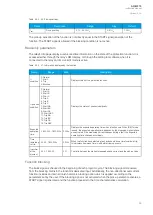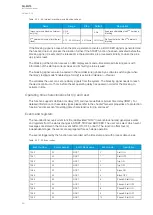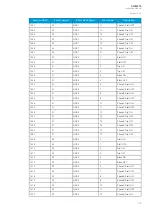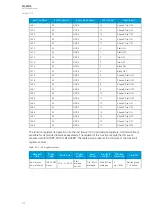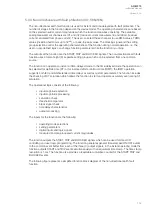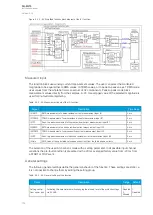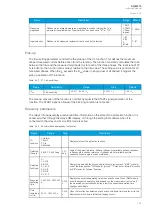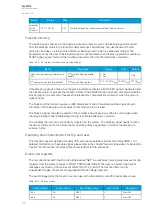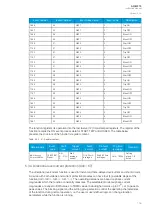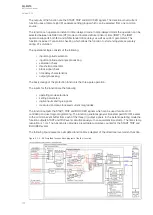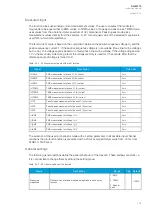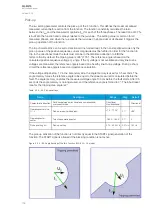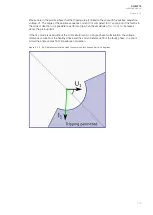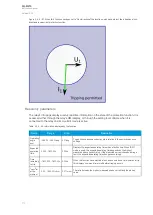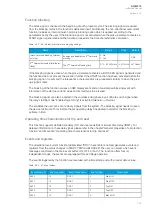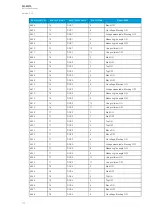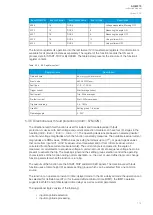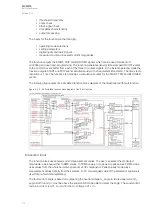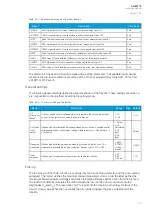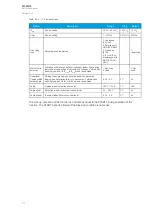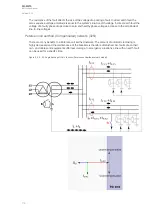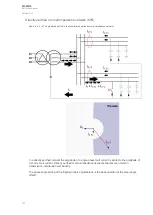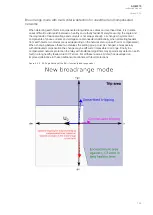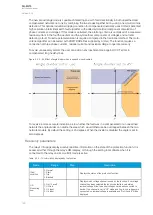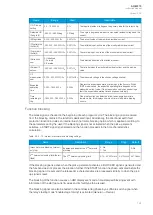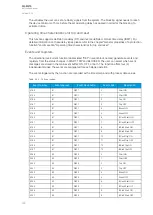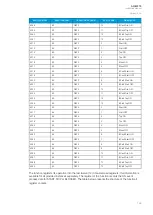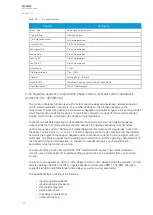
Function blocking
The block signal is checked in the beginning of each program cycle. The blocking signal is received
from the blocking matrix in the function's dedicated input. Additionally, the non-directional overcurrent
function includes an internal inrush harmonic blocking option which is applied according to the
parameters set by the user. If the blocking signal is not activated when the pick-up element activates, a
START signal is generated and the function proceeds to the time characteristics calculation.
Table. 5.3.4 - 66. Internal inrush harmonic blocking settings.
Name
Description
Range
Step
Default
Inrush harmonic blocking (internal-
only trip)
Enables and disables the 2
nd
harmonic
blocking.
0: No
1: Yes
-
0: No
2
nd
harmonic blocking limit (Iharm/
Ifund)
The 2
nd
harmonic blocking limit.
0.10…50.00%I
fund
0.01%I
fund
0.01%I
fund
If the blocking signal is active when the pick-up element activates, a BLOCKED signal is generated and
the function does not process the situation further. If the START function has been activated before the
blocking signal, it resets and the release time characteristics are processed similarly to when the pick-
up signal is reset.
The blocking of the function causes an HMI display event and a time-stamped blocking event with
information of the startup current values and its fault type to be issued.
The blocking signal can also be tested in the commissioning phase by a software switch signal when
the relay's testing mode "Enable stage forcing" is activated (
General
→
Device).
The variables the user can set are binary signals from the system. The blocking signal needs to reach
the device minimum of 5 ms before the set operating delay has passed in order for the blocking to
activate in time.
Operating time characteristics for trip and reset
This function supports definite time delay (DT) and inverse definite minimum time delay (IDMT). For
detailed information on these delay types please refer to the chapter "General properties of a protection
function" and its section "Operating time characteristics for trip and reset".
Events and registers
The directional overcurrent function (abbreviated "DOC" in event block names) generates events and
registers from the status changes in START, TRIP and BLOCKED. The user can select which event
messages are stored in the main event buffer: ON, OFF, or both. The function offers four (4)
independent stages; the events are segregated for each stage operation.
The events triggered by the function are recorded with a time stamp and with process data values.
Table. 5.3.4 - 67. Event codes.
Event Number
Event channel
Event block name
Event Code
Description
4800
75
DOC1
0
Start ON
4801
75
DOC1
1
Start OFF
4802
75
DOC1
2
Trip ON
4803
75
DOC1
3
Trip OFF
4804
75
DOC1
4
Block ON
A
AQ
Q-M215
-M215
Instruction manual
Version: 2.04
112

